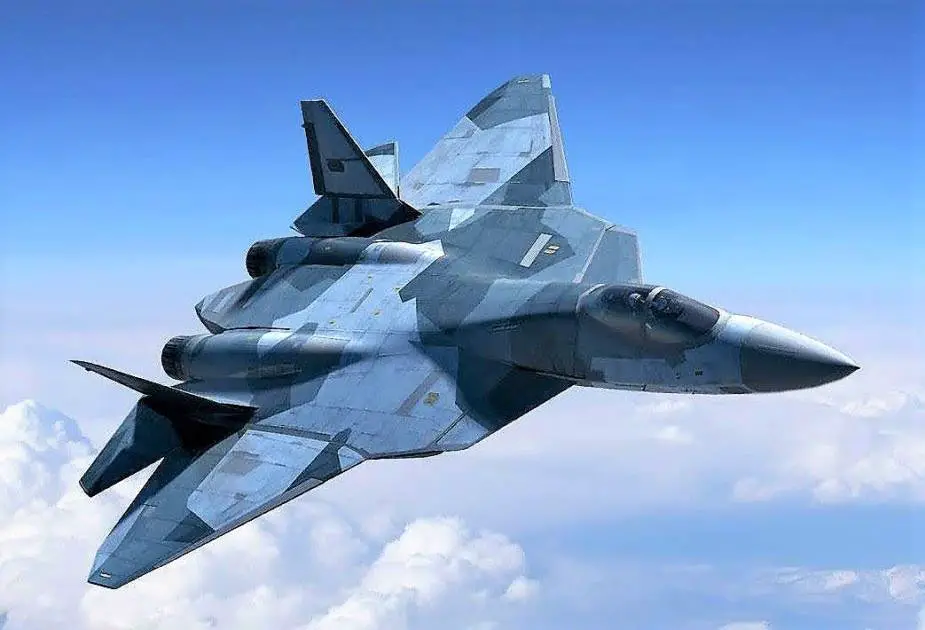Breaking news
Sukhoi designs bionic landing gear for Su-57 Felon fighter jet.
The Sukhoi Design Bureau has created the first aircraft component by bionic design. It is an aluminum landing gear for Su-57 fighter jet, the United Aircraft Corporation (UAC) said: “The first unit of the bionic design is an aluminum carrier (landing gear) for the Su-57. It is a fully domestic design, which was created on a super computer. The Pan-Russian Research Institute of Aviation Materials (VNIAM) used domestic aluminum powder to 3D print the unit,” it said.
Follow Air Recognition on Google News at this link
 A multirole fighter capable of aerial combat as well as ground and maritime strike, the Su-57 Felon incorporates stealth, supermaneuverability, supercruise, integrated avionics, and substantial internal payload capacity (Picture source: Rusian MoD)
A multirole fighter capable of aerial combat as well as ground and maritime strike, the Su-57 Felon incorporates stealth, supermaneuverability, supercruise, integrated avionics, and substantial internal payload capacity (Picture source: Rusian MoD)
The new carrier (landing gear) is 1/4 lighter than traditional ones. It was produced in one night, while traditional production takes at least a week. The generative design decreases the weight and increases durability against traditional solutions. It is often called bionic design, as the objects have clear traits of plants or bones. The geometry is generated by special software. The bionic design saves 30-50 percent of material and thus decreases the cost of product.
The Sukhoi Su-57 (NATO reporting name: Felon) is a twin-engine stealth multirole fighter aircraft developed by Sukhoi. It is the product of the PAK FA (litt. "prospective aeronautical complex of front-line air forces") programme, which was initiated in 1999 as a more modern and affordable alternative to the MFI (Mikoyan Project 1.44/1.42). Sukhoi's internal designation for the aircraft is T-50. The Su-57 is the first aircraft in Russian military service designed with stealth technology and is intended to be the basis for a family of stealth combat aircraft.
A multirole fighter capable of aerial combat as well as ground and maritime strike, the Su-57 incorporates stealth, supermaneuverability, supercruise, integrated avionics, and substantial internal payload capacity. The aircraft is expected to succeed the MiG-29 and Su-27 in the Russian military service and has also been marketed for export, the fighter is expected to have a service life of up to 35 years.[citation needed] The first prototype aircraft flew in 2010, but the program would experience a protracted development due to various structural and technical issues that emerged during trials, including the destruction of the first production aircraft in a crash before its delivery. After repeated delays, the first Su-57 entered service with the Russian Aerospace Forces (VKS)[N 2] in December 2020.

























